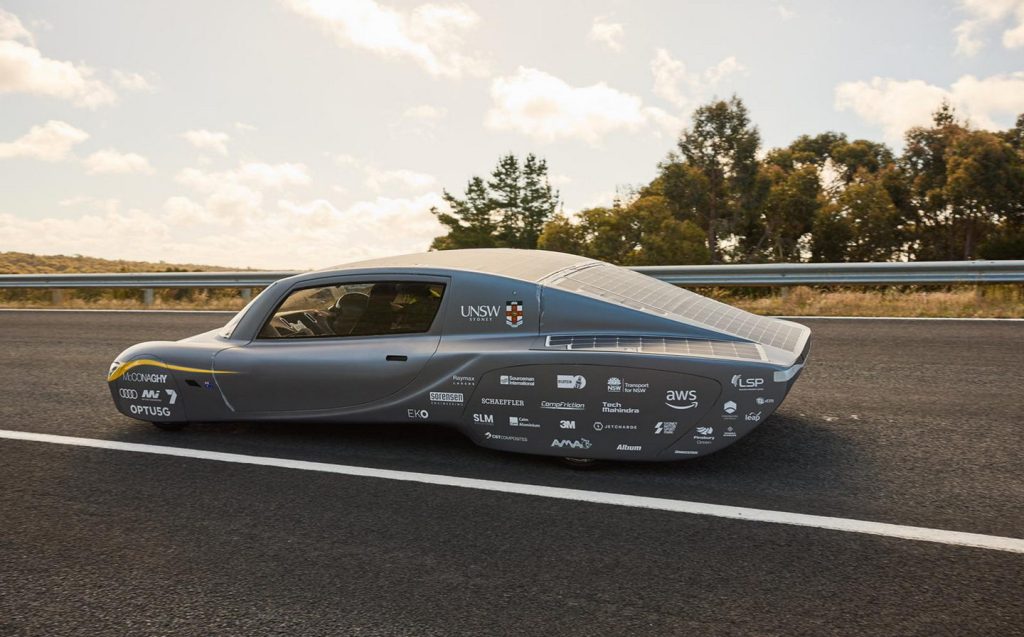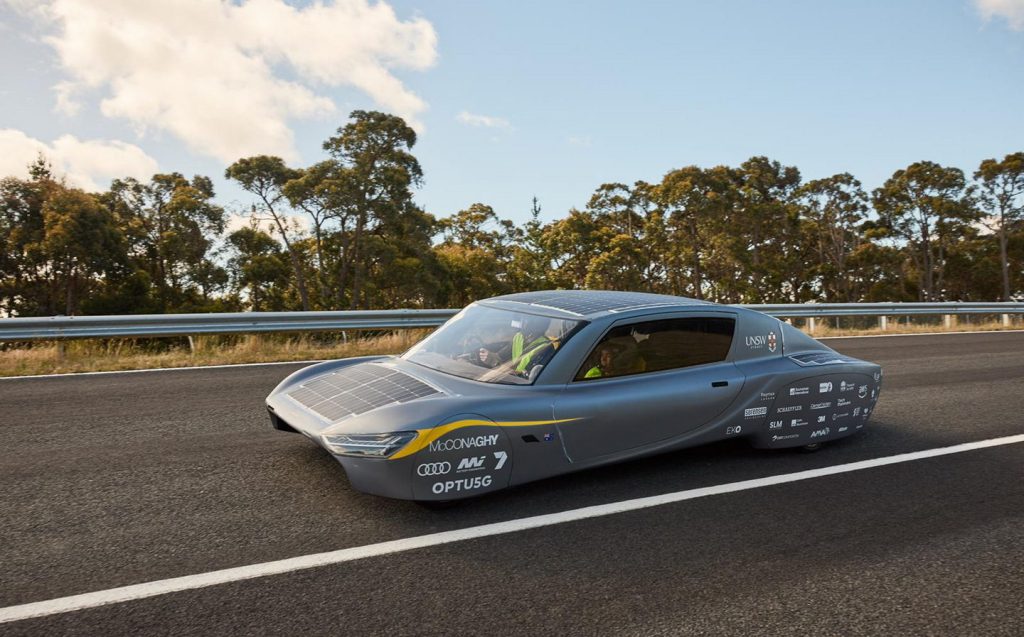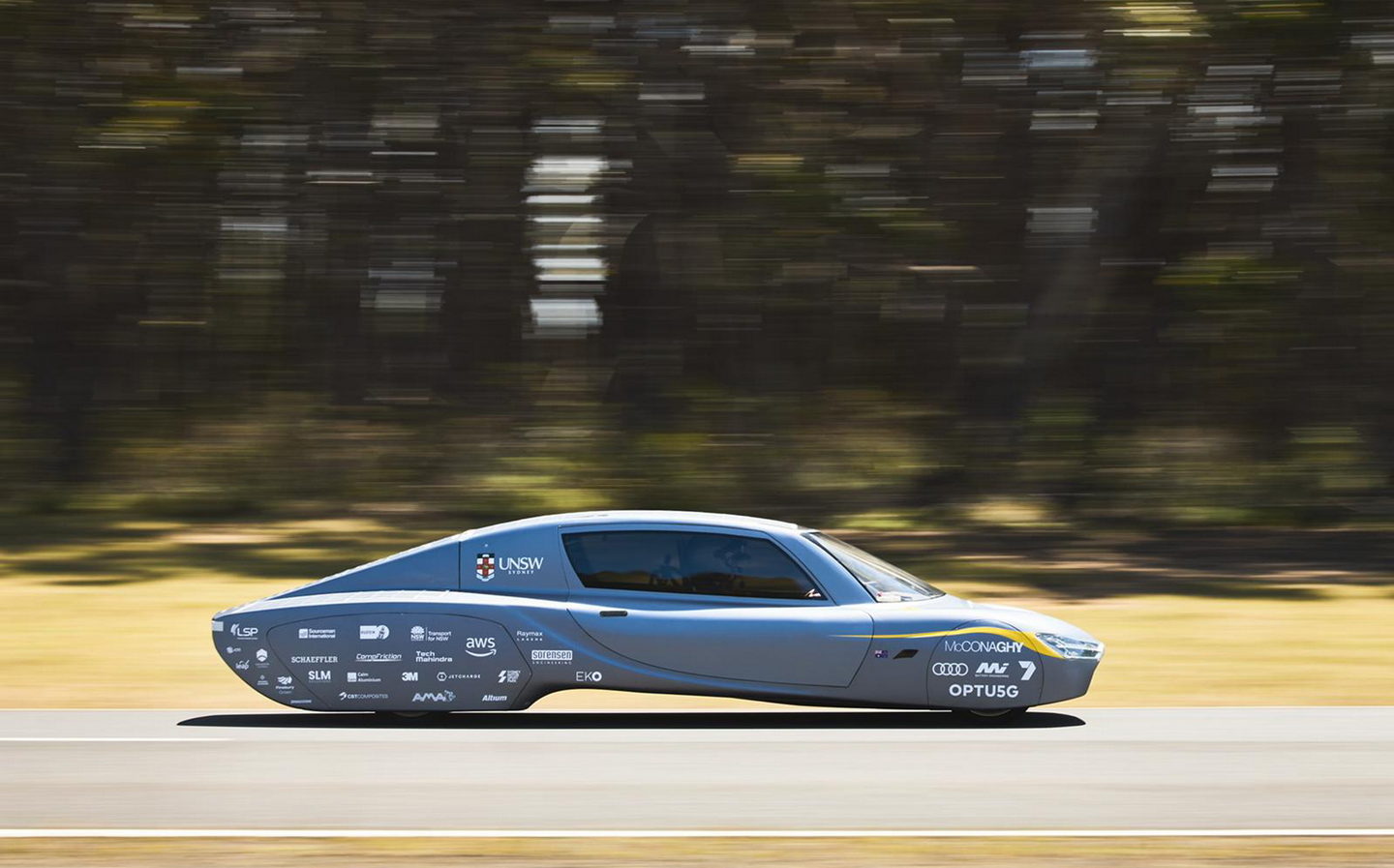Australian electric car set record for fastest EV over 621 miles on a single charge
But don't expect anything this efficient to hit showrooms
A solar-powered electric car built by an Australian university has entered the record books having travelled 1,000km (621 miles) in less than 12 hours on a single charge.
Sunswift 7, built by students at the University of New South Wales (UNSW) in Sydney circled a track at the Australian Automotive Research Centre (AARC) in Wensleydale, Victoria in a certified time of 11 hours 52.08 minutes, earning it the Guinness World Record title for “Fastest EV over 1,000km on a single charge”.
The streamliner lapped the track just before Christmas at an average speed of 53mph, but more impressive than the speed was the car’s incredible energy efficiency, achieving an 3.8kWh per 100km (16.4 miles/kWh).
“Even the most efficient EVs on the road today only achieve a rating of 15kWh/100km (4.1 miles/kWh) and the average is around 20kWh/100km (3.1 miles/kWh),” pointed out Professor Richard Hopkins, the former Red Bull Racing head of operations who led the project.
Of course, efficiency is easily improved by running at a constant 50mph on a flat surface in ideal weather conditions, using a vehicle that isn’t homologated for the road, but the 16.4 miles per kWh is still a staggering achievement.

And the vehicle’s design and engineering were the major factors in its record-breaking run, including a large number of solar panels that feed into the battery as it is driven.
Though UNSW hasn’t revealed the size of Sunswift’s battery, weighing in at around 500kg it’s far lighter than any mass-produced electric car for the road. It’s also much more slippery through the air: with a drag coefficient of just 0.095 it’s far more aerodynamic any production car, or even most efficiency prototypes.
But of course, in the quest for ultimate efficiency came other compromises.
“Sunswift 7 isn’t a production car of the future, since we’ve compromised on comfort and the cost is prohibitive,” Hopkins said.
“But we have shown that if you want to make cars more efficient, more sustainable, more environmentally friendly, then it is possible.
“I used to work in Formula One and nobody thinks we’ll be driving F1 cars on the road in five or 10 years. But the technology they use in F1 really pushes the boundaries and some of that filters down [to regular vehicles] and that’s what we are trying to do with Sunswift and what this world record shows is achievable.”

Major carmakers are looking to maximise the efficiency of their electric cars. Mercedes’ flagship EV, the EQS, is powered by a massive and very heavy 107kWh battery pack, but the key to it being able to achieve an official range figure of 485 miles between charging stops is its focus on aerodynamics and the clever use of materials.
Featuring a smaller battery than that of the EQS, Mercedes’ EQXX, a “road-legal research prototype” managed to drive from Stuttgart, Mercedes’ home city, to Silverstone racing circuit in Northamptonshire last June — a distance of 747 miles — without recharging en route.
Mercedes-Benz previews 620-mile electric EQXX prototype
This was achieved primarily thanks to its slippery aerodynamics (a drag coefficient of just 0.17), lightweight construction, roof-mounted solar panels and highly efficient battery. With a little charge remaining when the car reached Silverstone it was able to complete an additional 11 laps of the circuit.
On course, the EQXX achieved a decent energy consumption figure of 7.5 miles per kilowatt hour. That’s still some way off that of Sunswift, though it managed it on a variety of road and gradient types and occasionally at speeds in excess of 80mph.
That said, the team at UNSW didn’t have the might and expertise of one of the world’s biggest car-makers to call upon.
“Let’s remember, these are not the best-paid professional car makers in Stuttgart working for Mercedes,” said Richard Hopkins.
“This is a bunch of very smart amateurs who have taken all the ingredients and put it together in a brilliant way.
“But these young men and women are the future and they have already demonstrated here with Sunswift what they are capable of — imagine what they will do when we let them loose on the wider world.”
The record attempt wasn’t plain sailing for the team and, at points, there were serious doubts over whether Sunswift would make it.
At one point, a battery management issue caused the car to come to a complete halt. The rules of the event state that the vehicle can not be stationary for more than 15 minutes at a time; with the team working furiously to rectify the problem, the car was back on the road in 14 minutes and 52 seconds.
Aside from that one major mishap however, the run was largely uneventful, with the vehicle only stopping for periodic driver changes and for a tyre change following a minor puncture.
Related articles
- After reading about the new EV world record, you might like to watch how Skoda set a new drifting record on ice in its Enyaq
- It’s worth checking out the solar-powered Aptera car, too
- Car makers’ electric vehicle plans for 2023 and beyond
Latest articles
- Seven great automotive events to visit this summer, from F1 to art and champagne
- Watch new Porsche 911 GT3 smash Nürburgring record for manual cars
- Skoda Elroq 2025 review: Czech carmaker can’t seem to miss with its electric family cars
- Five best electric cars to buy in 2025
- Should I buy a diesel car in 2025?
- F1 2025 calendar and race reports: The new Formula One season as it happens
- Zeekr 7X AWD 2025 review: A fast, spacious and high tech premium SUV — but someone call the chassis chief
- Denza Z9GT 2025 review: Flawed but sleek 1,062bhp shooting brake from BYD’s luxury arm
- Extended test: 2024 Renault Scenic E-Tech review














